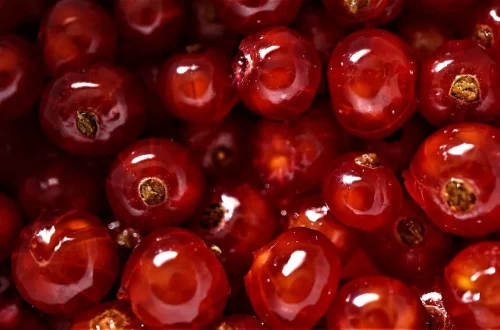
Understanding the Difference Between Bourbon and Rye Whiskey
Whiskey has long been a beloved spirit, steeped in tradition and complexity. Among its many varieties, bourbon and rye whiskey stand out as two of the most popular choices, each with its own unique characteristics and flavor profiles. While both are distilled from grains and share a common heritage, they differ significantly in terms of ingredients, production methods, and taste.
The rich history of whiskey in the United States is intertwined with cultural moments and regional distinctions that have shaped how we enjoy these spirits today. Bourbon, often associated with the Southern states, brings a sense of sweetness and warmth, thanks to its corn-heavy mash bill. On the other hand, rye whiskey, with its spicier and more robust profile, hails from the Northern regions, reflecting a different agricultural landscape and distilling tradition.
Understanding these differences can greatly enhance your appreciation for each type of whiskey. Whether you’re a seasoned connoisseur or a curious newcomer, delving into the nuances of bourbon and rye can unlock new experiences in the world of whiskey. Let’s explore the distinct characteristics that set these two spirits apart.
Ingredients and Mash Bill
The foundation of any whiskey lies in its ingredients, particularly the grains used in the mash bill. For bourbon, the law dictates that it must contain at least 51% corn. This high corn content is what gives bourbon its signature sweetness and smooth mouthfeel. In addition to corn, bourbon typically includes other grains such as barley and rye, contributing to its overall flavor complexity.
Rye whiskey, in contrast, must contain at least 51% rye grain. This significant proportion of rye is responsible for its spicier and more assertive flavor profile. The grain’s natural peppery notes can enhance the whiskey’s complexity, making it a popular choice for those who enjoy a bold drinking experience. In addition to rye, rye whiskey often includes corn and malted barley, which help balance the flavors and provide a smoother finish.
The type of grain used is not only a legal requirement but also a crucial factor in determining the whiskey’s taste. The choice of grains can also influence the aging process. Bourbon, with its higher sugar content from corn, tends to caramelize more during aging, resulting in a sweeter, richer flavor. Rye whiskey, on the other hand, develops a spiciness that can vary based on the specific strain of rye and the distillation process.
Understanding the mash bill is essential for anyone looking to appreciate the subtleties of these two types of whiskey. It sets the stage for the flavors that will emerge during fermentation and aging, ultimately shaping the final product that you pour into your glass.
Production Process and Regulations
The production process for bourbon and rye whiskey is governed by strict regulations that ensure quality and authenticity. For bourbon, it must be distilled to no more than 160 proof (80% alcohol by volume) and must be aged in new charred oak barrels. This requirement for new barrels is essential, as the charred interior imparts flavors of vanilla, caramel, and oak to the spirit. Bourbon must also be aged for a minimum of two years to be labeled as straight bourbon, although many brands choose to age their whiskey for longer to enhance the flavor profile.
Rye whiskey follows similar regulations but differs in some key aspects. Like bourbon, it must be distilled to no more than 160 proof and aged in new charred oak barrels. However, rye whiskey must be produced from a mash bill containing at least 51% rye. The aging process for rye whiskey can also vary, with some producers opting for shorter aging periods to maintain the whiskey’s spiciness and vibrancy.
Another important distinction lies in the location of production. While bourbon is often associated with Kentucky, it can be made anywhere in the United States. Rye whiskey, however, has strong ties to regions such as Canada and the northeastern United States, where it was originally developed. This geographical differentiation contributes to the unique characteristics of each type of whiskey.
Understanding the regulations and production processes behind bourbon and rye whiskey is crucial for appreciating their authenticity and quality. Each spirit tells a story of craftsmanship, tradition, and the land from which it originates.
Tasting Notes and Flavor Profiles
When it comes to tasting notes, bourbon and rye whiskey offer distinct experiences that cater to different palates. Bourbon is often characterized by its smooth and sweet flavor profile. The high corn content results in notes of caramel, vanilla, and honey, with a rich mouthfeel that makes it approachable for many drinkers. The aging process in charred oak barrels further enhances these flavors, adding layers of complexity that can include hints of toffee, spice, and oak.
In contrast, rye whiskey delivers a spicier and more robust flavor experience. The rye grain contributes a peppery note that can be both bold and invigorating. Tasting rye often reveals flavors such as baking spices, citrus zest, and even herbal notes, making it an exciting choice for those who appreciate a whiskey with a bit of kick. The finish of rye whiskey tends to be drier and more crisp compared to the lingering sweetness of bourbon.
Pairing these whiskeys with food can also enhance the tasting experience. Bourbon’s sweetness makes it a perfect match for rich dishes like barbecue or chocolate desserts, while rye’s spiciness complements savory meals such as roasted meats or spicy appetizers.
Understanding the flavor profiles of bourbon and rye whiskey can elevate your enjoyment of these spirits, allowing you to explore various cocktails or simply savor them neat or on the rocks. Each sip offers a glimpse into the artistry and tradition behind these beloved whiskeys.
Mixing and Cocktails
Both bourbon and rye whiskey play prominent roles in the cocktail scene, each bringing unique qualities to mixed drinks. Bourbon’s sweetness and smoothness make it a fantastic base for a variety of classic cocktails. The Old Fashioned and the Mint Julep are two iconic examples that highlight bourbon’s rich flavors. The Old Fashioned combines bourbon with bitters and a touch of sugar, allowing the whiskey’s natural sweetness to shine through. Meanwhile, the Mint Julep, a Southern favorite, combines bourbon with fresh mint and sugar, resulting in a refreshing and aromatic drink.
Rye whiskey, with its spiciness and complexity, brings a different character to cocktails. The Manhattan, a timeless classic, utilizes rye as its primary ingredient, combined with sweet vermouth and bitters to create a balanced and sophisticated drink. The spiciness of the rye complements the sweetness of the vermouth, resulting in a cocktail that is both rich and invigorating. Another popular rye cocktail is the Sazerac, which features rye whiskey, sugar, and absinthe, showcasing the bold flavors of the rye in a unique and flavorful way.
When mixing cocktails, the choice between bourbon and rye can significantly impact the overall flavor profile of the drink. Bourbon tends to create more approachable and sweeter cocktails, while rye adds complexity and a spicier kick. Experimenting with both spirits can lead to exciting discoveries and new favorites.
In conclusion, understanding the differences between bourbon and rye whiskey enhances your appreciation for these two remarkable spirits. From their distinct ingredients and production methods to their unique flavor profiles and roles in cocktails, both bourbons and ryes offer something special for every whiskey lover.
Whether you prefer the sweetness of bourbon or the spiciness of rye, exploring these differences can lead to a deeper understanding of whiskey as a whole. Cheers to discovering your favorite!
*Note: This article is for informational purposes only and does not constitute medical advice. Always consult a healthcare professional for medical-related questions or concerns.*




